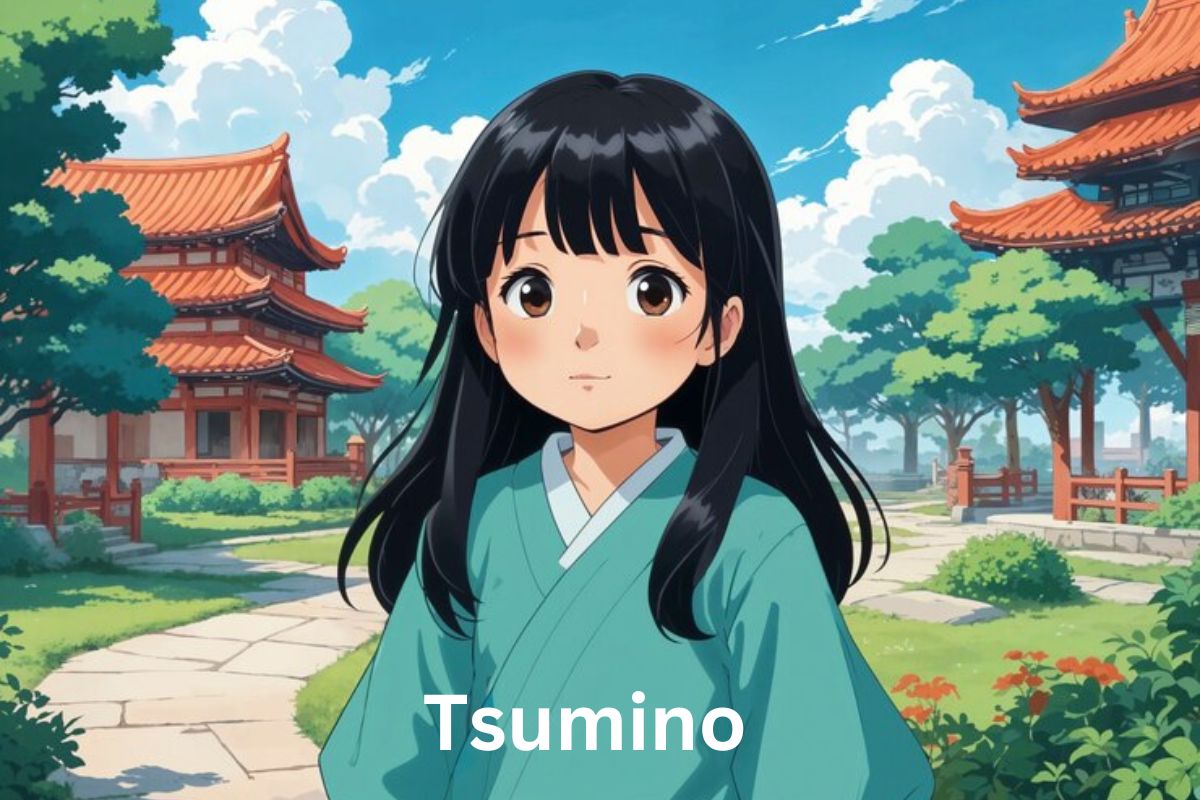BUSINESS
Coomersu Culture: Exploring Traditions and Modern Influences

“Coomersu culture” is a vibrant tapestry woven with rich traditions and modern influences. Nestled in the heart of its community are age-old customs that have shaped the lives of many. Today, this unique cultural heritage faces new challenges and opportunities as it interacts with contemporary society. Join us on this journey to explore the fascinating world of Coomersu—where ancient rituals meet modern innovation, creating a dynamic fusion that continues to evolve. Whether you’re familiar with Coomersu or just discovering it for the first time, there’s much to learn and appreciate about its enduring spirit and adaptability. Let’s dive deeper into what makes Coomersu culture truly special!
Historical Background and Origins
Coomersu culture has deep roots that stretch back centuries. Its origins are intertwined with the migration patterns of ancient peoples who settled in this vibrant region. These early inhabitants brought with them unique customs, beliefs, and a rich tapestry of storytelling.
Over time, local tribes began to form distinct identities while still sharing common threads. The blending of these influences created a dynamic cultural landscape marked by diversity and resilience.
Artifacts unearthed at archaeological sites reveal insights into daily life, trade practices, and spiritual beliefs from ages past. Oral traditions have preserved tales that reflect the values and struggles faced by ancestors.
As Coomersu evolved through various historical epochs—colonization, conflicts, and modernization—it retained core elements that define it today. Understanding this history is crucial for appreciating its contemporary expressions within the community.
Traditional Practices and Customs
Coomersu culture is rich with traditional practices that have been passed down through generations. These customs play a vital role in shaping the identity of the community.
One notable practice is the art of storytelling. Elders gather children and share tales filled with wisdom, morality, and history. This oral tradition fosters a strong bond between generations.
Craftsmanship also thrives within Coomersu culture. Artisans create intricate textiles and pottery, reflecting both functionality and artistic expression. Each piece tells its own story, connecting individuals to their heritage.
Rituals surrounding agriculture are significant as well. Seasonal festivals celebrate planting and harvest times, ensuring gratitude for nature’s bounty while reinforcing communal ties.
Music and dance are integral parts of celebrations too, showcasing vibrant rhythms that resonate deep within the heart of Coomersu culture. Such performances embody joy, unity, and an unbreakable spirit shared among community members.
Modern Influences on Coomersu Culture
Modern influences have subtly woven themselves into the fabric of Coomersu culture. Globalization has introduced new ideas and trends, reshaping traditional practices.
Young people are increasingly drawn to urban lifestyles, blending their heritage with contemporary elements. Social media plays a crucial role in this transformation, allowing for broader sharing of Coomersu traditions while inviting fresh interpretations.
Music and art within the community reflect these changes too. Traditional rhythms now fuse with modern genres, creating a unique soundscape that resonates with both locals and visitors.
Furthermore, culinary arts are experiencing an exciting evolution. Classic recipes incorporate international flavors, leading to innovative dishes that still honor their roots.
Despite these shifts, there’s a palpable desire among many to maintain core traditions amidst change. This tension between preservation and adaptation showcases the dynamic nature of cultural identity today.
The Evolution of Coomersu Festivals and Celebrations
Coomersu festivals have transformed significantly over the years, reflecting changing societal norms and values. Originally rooted in ancient rituals, these celebrations served as a means to honor agricultural cycles and deities.
As time progressed, they began to incorporate more community-oriented activities. Local artisans showcased their crafts alongside traditional music and dance performances. The emphasis shifted from purely religious observance to include cultural expression.
In recent decades, globalization has introduced new elements into Coomersu festivities. Modern music genres often blend with traditional sounds, creating an exciting fusion that attracts younger generations.
Social media plays a pivotal role now too. Events are promoted widely online, drawing larger crowds than ever before. This increased visibility enhances both local pride and tourism potential.
While adapting to contemporary influences, Coomersu festivals remain deeply anchored in their historical roots—a beautiful balance of tradition meeting modernity.
Impact of Tourism on Coomersu Culture
Tourism has dramatically reshaped Coomersu culture in recent years. The influx of travelers brings fresh ideas and perspectives, enriching local traditions. Visitors often seek authentic experiences that highlight age-old customs and practices.
However, this interaction can lead to commercialization. Traditional arts and crafts may become more about souvenir sales than cultural expression. Local artisans sometimes find themselves balancing authenticity with market demands.
On the flip side, tourism creates economic opportunities for the community. People can showcase their heritage while gaining financial stability. This symbiotic relationship helps sustain certain aspects of Coomersu culture.
Yet, there are concerns about dilution over time as global influences seep into everyday life. Maintaining a genuine connection to tradition amidst changing dynamics poses a challenge for many communities involved in tourism activities. Each step forward invites reflection on preserving what makes Coomersu unique while embracing new possibilities.
Preservation Efforts and Challenges
Preserving Coomersu culture is a delicate balancing act. Various organizations and community leaders are dedicated to maintaining traditions. They recognize the value in passing down knowledge to younger generations.
However, challenges abound. Globalization has introduced new influences that sometimes overshadow traditional practices. Young people may feel more connected to modern lifestyles than their cultural roots.
Limited funding for preservation initiatives can hinder progress. Many groups rely on volunteers who have other commitments, making it hard to sustain efforts over time.
There’s also the risk of commodification as tourism grows. While visitors contribute economically, they might unintentionally dilute authentic experiences by seeking only the spectacle rather than genuine engagement with local customs.
Despite these hurdles, many remain hopeful. Community workshops and educational programs are gaining traction, creating spaces for dialogue about identity and heritage within a rapidly changing world.
Conclusions
Coomersu culture is a vibrant tapestry woven from both ancient traditions and contemporary influences. Its ability to adapt while retaining core values speaks volumes about its resilience.
The balance between preserving customs and embracing change creates a dynamic cultural landscape. This duality fosters growth, inviting new generations to engage deeply with their heritage.
As we explore Coomersu culture further, it becomes evident that the past and present coexist in harmony. Each festival, tradition, or practice tells a story of identity and belonging.
Challenges remain in maintaining this equilibrium. But through awareness and appreciation, there’s hope for future generations to cherish what has come before them while thoughtfully integrating modern elements into their lives.
The journey continues as the community navigates these evolving narratives together.
FAQs
Coomersu culture is rich and multifaceted, reflecting a unique blend of historical influences and contemporary dynamics. As this vibrant tradition continues to evolve, it raises several questions often asked by those eager to learn more.
What are the key elements of Coomersu culture?
The core elements include traditional music, dance, culinary practices, and dress that embody the values and history of the community.
How has tourism impacted Coomersu culture?
Tourism brings both opportunities for economic growth and challenges related to cultural preservation. While it promotes awareness, there are concerns about commercialization diluting authentic traditions.
Are there any ongoing efforts to preserve Coomersu traditions?
Yes, various organizations work tirelessly to document customs and educate younger generations. Community workshops aim to keep these practices alive amidst modern influences.
What role do festivals play in preserving Coomersu culture?
Festivals serve as a vital link between past traditions and present-day experiences. They celebrate heritage while also adapting to attract wider audiences.
Can anyone participate in Coomersu celebrations or events?
Generally, many events encourage participation from outsiders. This inclusion fosters understanding but should always be approached with respect for cultural significance.
As interest in Coomersu culture grows globally, understanding its intricacies becomes essential for genuine appreciation. Engaging with its traditions allows us all a glimpse into a world shaped by history yet vibrant with life today.
BUSINESS
Fortnite Unblocked: How to Bypass Restrictions in 5 Easy Steps

In today’s digital age, online gaming isn’t just a hobby—it’s a global phenomenon. Among the most popular games captivating millions is Fortnite. But what happens when you find your access restricted just when you’re ready to suit up for Battle Royale? If you’ve faced the frustration of blocked gaming at school, work, or other networks, you’re not alone. This blog post will provide an easy-to-follow guide to bypass these restrictions and get you back in the game, no matter where you are.
The Allure of Fortnite
Fortnite isn’t just a game; it’s a cultural phenomenon that keeps players hooked with its dynamic gameplay, frequent updates, and community events. Its rapid rise to fame is owed to a few unique features. First, the game’s Battle Royale mode pits 100 players against each other on a shrinking map, offering a thrilling and unpredictable experience each time. Second, Fortnite’s creative mode allows players to build worlds and challenges, providing endless opportunities for creativity and engagement. Lastly, the game’s vibrant, cartoonish art style, combined with the ability to perform dance moves like the Floss or Orange Justice, adds a fun and lighthearted touch that appeals to players of all ages.
Playing Fortnite also fosters a sense of community. With the ability to squad up with friends or connect with players worldwide, it’s a social experience as much as it is a competitive one. Events like Travis Scott’s virtual concert or the Marvel-themed season keep the game fresh and engaging, drawing in fans from various backgrounds and interests. These elements all contribute to why players are eager to play even when facing restrictions—missing out could mean not only losing a match but also losing touch with digital communities and friendships.
Understanding Network Restrictions
Network restrictions are more common than you might think and are often implemented by institutions like schools, workplaces, and libraries. The primary reason for such restrictions is to ensure that bandwidth is used for educational or work-related purposes, preventing distractions that gaming could cause. Network administrators apply filters that block access to certain websites and services, including online games like Fortnite.
A blocked network can be frustrating, especially if you’re looking to unwind during your break or catch up with friends online. These restrictions often involve firewalls or proxy servers that monitor and control incoming and outgoing traffic based on predetermined rules. While these measures are put in place for valid reasons, they can feel restrictive, particularly when they’re overly broad and affect access to legitimate content outside of work or school hours.
Understanding how these restrictions work is the first step to bypassing them. They typically target specific IP addresses or domain names, making it difficult to access blocked content directly. However, knowing the mechanics behind these restrictions can help you discover loopholes or alternative methods to regain access. By recognizing the types of blocks in place, you can choose the best strategies to bypass them effectively and responsibly.
Assessing the Risks
Before attempting to bypass any restrictions, it is crucial to consider the potential risks involved. While accessing Fortnite Unblocked on a restricted network may seem harmless, doing so without permission could lead to consequences. Institutions implement these restrictions for specific reasons, and flouting them might result in disciplinary action, loss of network access, or other repercussions. It’s essential to weigh the benefits against the potential drawbacks.
Additionally, bypassing restrictions can expose your device to security vulnerabilities. Some methods, like using free VPNs or proxy servers, might compromise your data privacy or install unwanted software. These risks can be even greater if you are using shared or public devices, where your actions might inadvertently affect others as well. It’s vital to prioritize your digital safety and ensure any tool you use comes from a reputable source.
Finally, consider the ethical implications. Every institution has its rules, and respecting them is part of being responsible and accountable. If you feel that the restrictions are excessive, it may be beneficial to discuss them with a network administrator and seek permission or alternative solutions. Approaching the situation openly and honestly can sometimes yield better results than attempting to circumvent the rules covertly.
Quick Solutions That Won’t Work
Before we get into effective methods, let’s address some quick solutions that, unfortunately, won’t work. While it might be tempting to try these first, they typically fall short and waste valuable gaming time. First, simply changing your Wi-Fi network may seem like an easy fix, but most institutions have multiple layers of security that extend beyond just the Wi-Fi network, preventing unauthorized access regardless of the connection.
Next, some players think that disabling the firewall on their device will solve the problem. However, this is not advisable because firewalls are crucial for protecting your device from malicious attacks. Furthermore, many institutions have server-based firewalls that cannot be bypassed by merely altering device settings. Attempting to disable your firewall can leave your device vulnerable and still won’t grant you access to Fortnite.
Finally, using incognito or private browsing modes doesn’t bypass network restrictions. These modes are mainly designed to prevent your browsing history from being stored locally on your device; they don’t affect how your device interacts with external network controls. While incognito mode might offer some privacy benefits, it has no effect on the blocks put in place by network administrators.
Step 1: Using a Reliable VPN
A Virtual Private Network (VPN) is one of the most effective tools for bypassing network restrictions. By encrypting your internet connection and routing it through a server in another location, a VPN masks your IP address, making it appear as though you’re accessing the web from a different place. This can help you bypass filters that block specific sites or services, like Fortnite.
When choosing a VPN, it’s crucial to select a reputable and reliable service. Free VPNs might seem appealing, but they often come with limitations such as data caps, slower speeds, and potential privacy risks. Instead, opt for a paid VPN service known for its speed, security, and range of server locations. Services like NordVPN, ExpressVPN, or CyberGhost are popular among gamers for their robust performance and user-friendly interfaces.
To use a VPN, download and install the VPN client on your device. Once installed, open the application, select a server location, and connect. After a successful connection, your internet traffic will be encrypted, and you should be able to access Fortnite without any restrictions. Remember to disconnect from the VPN once you’re done gaming to maintain normal browsing speeds for other activities.
Step 2: Web-Based Proxies
Another approach to bypass restrictions is using web-based proxies. These proxies act as intermediaries between your device and the internet, allowing you to access blocked sites indirectly. By entering the URL of the blocked site into the proxy’s web interface, the proxy retrieves the information and forwards it to you, bypassing network filters.
Web-based proxies are often free and require no installation, making them accessible and easy to use. However, they typically provide slower speeds and less security compared to VPNs. When using a proxy, it’s important to ensure the service is reputable, as some free proxies may log your data or inject ads into the pages you visit. Services like Hide.me or ProxySite can be useful for casual browsing, but they may not offer the best experience for gaming.
To use a web-based proxy, simply search for a reliable service, open its website, and enter the Fortnite URL or launcher link. Click “Go” or “Connect,” and the proxy will attempt to retrieve the site for you. While this method can help bypass basic restrictions, it might not be suitable for all networks, and the performance may vary depending on the server load and distance.
Step 3: Changing DNS Settings
Another method to bypass network restrictions is by changing your DNS settings. Domain Name System (DNS) servers are responsible for translating domain names into IP addresses. Some institutions use DNS filtering to block certain websites, but by switching to a public DNS, you can potentially bypass these blocks.
Google Public DNS and Cloudflare DNS are popular options known for their speed and reliability. To change your DNS settings, go to your device’s network settings, find the DNS configuration option, and enter the IP addresses for the desired service. For Google Public DNS, use 8.8.8.8 and 8.8.4.4, and for Cloudflare, use 1.1.1.1 and 1.0.0.1. Save the changes and restart your device to apply the new settings.
Keep in mind that changing DNS settings may not be effective for all networks, especially those with more advanced filtering technologies. However, this method can provide a simple and quick solution for networks relying primarily on DNS blocking.
Step 4: Portable Game Version
If network restrictions continue to be an obstacle, consider using a portable version of Fortnite. A portable game does not require installation and can be run directly from a USB drive or external storage device. While this method doesn’t bypass network restrictions, it can be useful when you have limited access to game files or need to play on public or shared devices.
To create a portable version, download the Fortnite installer and save it to a USB drive. This setup allows you to plug the USB drive into a compatible device and run the game without requiring administrative access or installation.
Using a portable version is particularly helpful when traveling or using shared devices, as it provides flexibility and convenience. However, ensure that the device you’re using has adequate hardware and permissions to run the game smoothly.
Step 5: Communicating with Network Administrators
If all else fails and restrictions are too stringent, consider discussing your situation with network administrators. They may be willing to make exceptions or offer alternative solutions, especially if you establish that your gaming sessions won’t interfere with bandwidth or productivity.
When approaching administrators, be honest and respectful. Explain your interest in playing Fortnite and any potential benefits, such as stress relief or social interaction with friends. Request their input on potential solutions and be open to compromises or limitations that might be necessary to maintain network integrity.
Building a positive relationship with network administrators can sometimes lead to more flexible arrangements and a better understanding of the network policies in place.
Conclusion
Playing Fortnite on a restricted network can be challenging, but with the right tools and knowledge, it’s possible to bypass these obstacles and enjoy gaming anytime, anywhere. Whether using a VPN, web-based proxy, changing DNS settings, or trying a portable game version, there are multiple approaches to consider based on your specific needs and situation.
Always remember to weigh the risks and benefits of bypassing network restrictions, prioritizing your digital safety and considering potential consequences. If possible, engage in open communication with network administrators to seek permission or clarify any concerns. Now, gear up and get ready to drop into action!
BUSINESS
Mollygram: Marketing Strategies Boost Your Brand in 2024

In the fast-paced world of digital marketing, staying ahead of the curve is crucial. With 2024 on the horizon, brands are exploring innovative strategies to capture attention and drive engagement. Among these rising techniques, Mollygram marketing is emerging as a game-changer. This blog post will explore how your brand can leverage Mollygram marketing strategies to thrive in 2024. Expect to gain insights into effective tactics, practical tips, and real-world examples that will propel your brand forward.
The Rise of Mollygram in Modern Marketing
Mollygram marketing has quickly become a buzzword in the digital landscape. But what exactly is it? Simply put, Mollygram refers to the use of personalized, niche-targeted content to engage specific audiences. This approach capitalizes on the trend of consumers seeking relatable and authentic interactions. By 2024, brands that adopt Mollygram strategies can expect to see significant improvements in customer loyalty and conversion rates.
Personalization is the heart of Mollygram marketing. In a world where consumers are bombarded with generic ads, personalized content cuts through the noise. It creates a sense of belonging and fosters strong emotional connections between brands and their audiences. For brands, this means higher engagement rates and increased customer satisfaction.
Mollygram also taps into the growing demand for authenticity. Today’s consumers value transparency and genuine interactions. By showcasing real stories and experiences, brands can build trust and credibility. This not only enhances brand reputation but also encourages customer advocacy.
Understanding Your Audience
The foundation of any successful Mollygram strategy lies in understanding your audience. Knowing who they are, what they value, and how they interact with content is essential. Start by conducting thorough market research. Utilize surveys, focus groups, and social media analytics to gather valuable insights.
Creating detailed buyer personas can be particularly beneficial. These personas act as fictional representations of your target customers. They help you tailor your messaging and content to resonate with specific segments of your audience. By addressing the unique needs and preferences of each persona, you can craft more compelling and relevant Mollygrams.
Data analytics tools are invaluable for understanding audience behavior. They provide insights into user demographics, online habits, and content preferences. By analyzing this data, you can refine your Mollygram strategies to better align with audience expectations and drive greater engagement.
Crafting Compelling Content
Content is king, and in the realm of Mollygram marketing, it’s no different. To captivate your audience, your content must be engaging, informative, and visually appealing. Start by focusing on storytelling. People love stories, and a well-told narrative can leave a lasting impression.
Visual elements play a vital role in Mollygram content. Incorporate high-quality images, videos, and graphics to enhance the visual appeal of your posts. These elements not only make your content more attractive but also increase its shareability on social media platforms.
Incorporating humor and relatability can make your Mollygrams stand out. Consumers appreciate content that resonates with their everyday experiences. By injecting humor and personal anecdotes, you create a sense of familiarity and strengthen the connection between your brand and the audience.
Leveraging Social Media Platforms
Social media platforms are the perfect playground for Mollygram marketing. Each platform offers unique features and user demographics, allowing you to tailor your content to specific audiences. Instagram, with its visual-centric nature, is a popular choice for Mollygram campaigns. Its Stories feature allows brands to share behind-the-scenes content and interact with users in real time.
TikTok, known for its short-form videos, is another excellent platform for Mollygram strategies. Brands can leverage creative challenges and user-generated content to engage younger audiences. The platform’s algorithmic feed also increases the chances of reaching a broader audience.
Facebook and Twitter offer diverse opportunities for Mollygram marketing. Facebook Live allows brands to host live events and Q&A sessions, fostering direct interaction with followers. Twitter, on the other hand, is ideal for sharing quick updates, news, and engaging with trending topics.
Building a Strong Community
Creating a sense of community is a key aspect of Mollygram marketing. Consumers enjoy feeling part of something larger than themselves. By fostering a community around your brand, you can build lasting relationships and encourage brand loyalty.
Engage with your audience regularly. Respond to comments, messages, and mentions promptly. Show genuine interest in their feedback and incorporate their suggestions into your content. This not only strengthens your relationship with existing customers but also attracts new ones.
Hosting virtual events and webinars can also enhance community building. These events allow you to connect with your audience on a deeper level and provide them with valuable insights. Whether it’s a product demonstration or an educational session, such events create memorable experiences and reinforce brand loyalty.
Collaborating with Influencers
Influencer marketing remains a powerful tool in the Mollygram arsenal. Collaborating with influencers who align with your brand values can significantly amplify your reach and credibility. These individuals have established trust and rapport with their followers, making them ideal partners for promoting your brand.
When selecting influencers, consider their relevance to your industry and audience. Micro-influencers, in particular, often have more engaged and niche followings. Working with them can result in higher conversion rates and a more authentic connection with your audience.
To maximize the impact of influencer collaborations, give them creative freedom. Allow them to infuse their unique style and voice into the Mollygram content. Authenticity is key, and when influencers genuinely believe in your brand, their followers are more likely to trust their recommendations.
Measuring Success and Making Improvements
Measuring the success of your Mollygram campaigns is crucial for continuous improvement. Establish key performance indicators (KPIs) that align with your marketing goals. These could include engagement rates, click-through rates, conversion rates, and overall brand sentiment.
Utilize analytics tools to track and analyze campaign performance. Platforms like Google Analytics and social media insights provide valuable data on how your Mollygrams are performing. Use this data to identify areas of strength and areas that need improvement.
Based on your analysis, make necessary adjustments to your Mollygram strategies. Experiment with different content formats, posting times, and messaging styles. The digital landscape is constantly evolving, and staying agile allows you to adapt to changing trends and audience preferences.
Incorporating User-Generated Content
User-generated content (UGC) is a powerful asset for Mollygram marketing. Encouraging your audience to create and share content related to your brand not only increases engagement but also fosters a sense of ownership and community.
Create branded hashtags and challenges that encourage user participation. Running contests and giveaways with UGC requirements can also motivate your audience to get involved. When users see their content featured by your brand, it strengthens their connection and loyalty.
Curate and showcase the best UGC on your brand’s social media channels and website. Acknowledge and celebrate your followers’ creativity and enthusiasm. Highlighting UGC not only adds authenticity to your brand but also encourages more users to participate.
Navigating Challenges and Overcoming Obstacles
Like any marketing strategy, Mollygram marketing comes with its share of challenges. One common obstacle is maintaining authenticity while scaling your efforts. As your brand grows, it’s crucial to stay true to your core values and continue delivering genuine experiences to your audience.
Another challenge is keeping up with rapidly evolving trends and technology. The digital landscape is dynamic, and it’s essential to remain adaptable. Stay informed about industry developments and be open to experimenting with new tools and techniques.
Managing negative feedback and comments is also part of the game. Address criticism constructively and use it as an opportunity to improve. Transparency and a willingness to learn from mistakes can strengthen your brand’s reputation and credibility.
Future Trends in Mollygram Marketing
The future of Mollygram marketing holds exciting possibilities. Artificial intelligence and machine learning are expected to play a more significant role in content personalization. AI-driven tools can analyze user data to deliver hyper-targeted Mollygrams, enhancing engagement and conversion rates.
Augmented reality (AR) is another trend that could revolutionize Mollygram strategies. Brands can leverage AR to create immersive experiences, allowing users to interact with products in real-time. This technology can bridge the gap between the digital and physical worlds, creating unforgettable brand interactions.
Sustainability and ethical practices are also gaining prominence in Mollygram marketing. Consumers are increasingly conscious of brand values, and supporting businesses that align with their beliefs is becoming a priority. Demonstrating a commitment to sustainability and social responsibility can enhance brand loyalty.
Conclusion
Mollygram marketing is poised to redefine digital marketing strategies in 2024. By understanding your audience, crafting compelling content, and leveraging social media, your brand can build authentic connections and drive meaningful engagement. Remember to measure success, adapt to changing trends, and stay true to your brand values.
With the right Mollygram strategies, your brand can not only thrive but also lead the charge in the digital landscape. Start incorporating these strategies today, and watch your brand soar to new heights. If you’re ready to take the next step, explore further resources and connect with industry experts to enhance your Mollygram marketing efforts.
BUSINESS
MyFastBroker.com Forex Brokers: A Beginner’s Guide to Success

In the fast-paced world of Forex trading, finding the right broker can be a daunting task, especially for beginners. The intricacies of the market, the multitude of brokers available, and the complexity of financial instruments all add layers of challenge. That’s where MyFastBroker.com comes in, offering a guiding hand to help you find your footing in Forex trading. This guide is designed to provide beginners with valuable insights into the world of Forex brokers and how MyFastBroker.com can be your partner on the path to success.
Understanding Forex Trading
Forex, or foreign exchange trading, involves buying and selling currency pairs in a decentralized global market. It operates 24 hours a day across major financial centers worldwide. For beginners, this might seem overwhelming, but with the right guidance, it can be a rewarding endeavor. This section will help you understand the basics of Forex trading and why it’s a popular choice for many investors.
Forex trading is all about the exchange of currencies. For example, you might trade Euros for US Dollars, aiming to profit from fluctuations in their exchange rate. This market is known for its liquidity, meaning you can buy or sell quickly without affecting the price much. It’s also accessible to individuals, allowing traders to participate with relatively small investments.
Understanding the currency pairs is crucial. Each pair consists of a base currency and a quote currency. For instance, in EUR/USD, EUR is the base currency and USD is the quote currency. Traders speculate on whether the base currency will strengthen or weaken against the quote currency.
The Importance of Choosing the Right Broker
The choice of a MyFastBroker.com Forex Broker scan significantly impact your trading experience. The right broker provides a reliable trading platform, competitive spreads, and a range of tools to support your trading strategy. Conversely, a poor choice can lead to frustrations, financial losses, or even fraudulent activities. This section highlights the importance of selecting the right broker and how MyFastBroker.com simplifies this process.
A reputable broker ensures fair trading conditions and the security of your funds. Regulatory compliance is a hallmark of a trustworthy broker, providing transparency and protection for traders. Many brokers also offer educational resources, helping beginners understand the nuances of Forex trading and develop effective strategies.
MyFastBroker.com stands out by offering a selection of top brokers, each vetted for their reliability and performance. By partnering with MyFastBroker.com, you gain access to detailed comparisons and reviews, enabling you to make informed decisions.
How MyFastBroker.com Can Help
Navigating the sea of Forex brokers can be overwhelming. MyFastBroker.com acts as a beacon, guiding beginners to brokers that align with their trading goals. With its user-friendly interface and comprehensive broker reviews, MyFastBroker.com empowers traders to make informed choices. In this section, we will explore the features and services MyFastBroker.com offers to simplify your broker selection process.
MyFastBroker.com provides a curated list of brokers, each evaluated based on key criteria such as trading platforms, customer support, and regulatory compliance. The platform’s intuitive search features allow you to filter brokers based on specific preferences, saving you time and effort in your search.
In addition to broker comparisons, MyFastBroker.com offers educational resources, including articles and tutorials tailored to beginners. These resources cover essential topics such as risk management, trading strategies, and market analysis, helping you build a solid foundation in Forex trading.
Understanding Broker Fees and Spreads
One of the critical factors to consider when choosing a Forex broker is the cost of trading. Brokers earn money through spreads—the difference between the buy and sell prices of a currency pair—and commissions. Understanding these costs is essential for optimizing your trading strategy and managing expenses. This section will break down the types of fees you may encounter and offer tips for selecting a broker with competitive pricing.
Spreads can vary between brokers, affecting your trading profitability. Some brokers offer fixed spreads, while others have variable spreads that can widen during volatile market conditions. It’s important to understand the spread structure of your chosen broker and factor it into your trading decisions.
Commissions are another consideration, particularly for brokers that offer ECN accounts. These accounts typically have lower spreads but charge a commission per trade. Evaluating the overall cost, including spreads and commissions, will help you choose a broker that aligns with your trading style and budget.
Evaluating Trading Platforms
The trading platform is your gateway to the Forex market, making it a crucial factor in your broker selection. A user-friendly, reliable platform can enhance your trading experience, while a clunky or unstable one can lead to costly mistakes. This section will guide you through the features to look for in a trading platform and how MyFastBroker.com aids in evaluating these platforms.
Key features to consider include charting tools, technical indicators, and execution speed. A good platform should offer a seamless experience with intuitive navigation and access to real-time data. Popular platforms like MetaTrader 4 and MetaTrader 5 are well-regarded for their robust features and user-friendly interfaces.
MyFastBroker.com provides insights into the platforms offered by various brokers, highlighting their strengths and weaknesses. By accessing these detailed reviews, you can select a broker that provides a platform suited to your trading needs and preferences.
The Role of Regulation in Forex Trading
Regulation ensures the integrity and safety of the Forex market, making it a crucial consideration for traders. Regulated brokers adhere to strict guidelines, offering protection for traders’ funds and transparent operations. This section will explain the importance of regulation and how MyFastBroker.com helps you identify regulated brokers.
Regulatory bodies, such as the Financial Conduct Authority (FCA) and the Australian Securities and Investments Commission (ASIC), oversee brokers’ activities to ensure compliance with industry standards. Trading with a regulated broker provides peace of mind, knowing your funds are protected and that the broker operates ethically.
MyFastBroker.com highlights brokers’ regulatory statuses, providing you with essential information to make informed decisions. By choosing a regulated broker recommended by MyFastBroker.com, you can trade with confidence.
Exploring Account Types
Forex brokers offer various account types, each designed for different levels of experience and trading needs. Understanding these account types helps you select one that aligns with your goals and risk tolerance. This section will explore common account types and provide guidance on choosing the right one for your trading style.
Standard accounts are suitable for most traders, offering a balance between flexibility and cost. These accounts typically have moderate spreads and no commissions, making them accessible to beginners. For more experienced traders, ECN accounts offer tighter spreads and faster execution, albeit with commissions.
MyFastBroker.com provides detailed information on the account types offered by brokers, allowing you to compare features and select an account that meets your requirements. By understanding the nuances of each account type, you can optimize your trading strategy.
The Impact of Leverage
Leverage is a powerful tool in Forex trading, allowing you to control larger positions with a relatively small amount of capital. However, it also amplifies risk, making it essential to understand how leverage works and its implications. This section will demystify leverage and offer tips on using it responsibly.
Leverage is expressed as a ratio, such as 100:1, indicating the amount of exposure relative to your capital. While leverage can increase potential profits, it also magnifies losses. Therefore, it’s crucial to use leverage judiciously and incorporate risk management strategies into your trading plan.
MyFastBroker.com provides insights into the leverage offerings of different brokers, helping you choose one that aligns with your risk tolerance and trading objectives. By understanding the impact of leverage, you can make informed decisions to balance risk and reward.
Developing a Trading Strategy
A well-defined trading strategy is key to success in Forex trading. Your strategy should outline your approach to entering and exiting trades, managing risk, and adapting to market conditions. This section will guide you through the process of developing a trading strategy, with tips for beginners to get started.
Your trading strategy should begin with clear goals and objectives. Are you looking for short-term gains or long-term growth? Defining your goals will help shape your approach to trading and risk management.
Next, consider your risk tolerance and position size. How much of your capital are you willing to risk on each trade? Establishing these parameters will protect your account from significant losses and keep emotions in check.
MyFastBroker.com offers resources to help you develop a trading strategy, including articles on market analysis, risk management, and technical indicators. By leveraging these resources, you can create a strategy that aligns with your goals and enhances your trading success.
Staying Informed with Market Analysis
Staying informed about market trends and developments is essential for making informed trading decisions. Market analysis involves studying past and present data to predict future price movements. This section will introduce you to fundamental and technical analysis, helping you stay ahead in the Forex market.
Fundamental analysis focuses on economic indicators, geopolitical events, and other factors that influence currency prices. By understanding these drivers, you can anticipate how they might impact the market and adjust your strategy accordingly.
Technical analysis, on the other hand, involves studying price charts and patterns to identify potential entry and exit points. Technical indicators, such as moving averages and Fibonacci retracements, provide insights into market sentiment and trends.
MyFastBroker.com provides access to market analysis tools and resources, helping you stay informed and make data-driven decisions. By incorporating both fundamental and technical analysis into your trading, you can enhance your ability to predict market movements.
Leveraging the Power of Community
Joining a community of like-minded traders can provide valuable support and insights as you navigate the Forex market. Engaging with a community allows you to share experiences, learn from others, and gain new perspectives on trading. This section will explore the benefits of being part of a trading community and how MyFastBroker.com fosters collaboration among traders.
Participating in forums and discussion groups provides a platform for exchanging ideas and strategies. By connecting with traders of varying experience levels, you can learn from their successes and challenges, broadening your understanding of the market.
MyFastBroker.com encourages community engagement through its interactive features, allowing you to connect with fellow traders and share insights. By joining this community, you gain access to a wealth of knowledge and support, enhancing your trading experience.
Conclusion
Navigating the world of Forex trading as a beginner can be challenging, but with the right resources and guidance, success is within reach. MyFastBroker.com offers a comprehensive platform to help you find the right broker, understand market dynamics, and develop effective trading strategies. By leveraging the tools and insights provided by MyFastBroker.com, you can confidently embark on your trading journey and work towards achieving your financial goals. Explore the possibilities with MyFastBroker.com and take the first step towards Forex success!
-

 blog9 months ago
blog9 months agoCuqui Selection: Elevating Your Culinary Experience One Bite at a Time
-

 ENTERAINMENT8 months ago
ENTERAINMENT8 months agoAniwave: Unlimited Free Anime Streaming with No Ads
-

 BUSINESS9 months ago
BUSINESS9 months agoThe Role of the Information Society in Fashion Magazine Articles
-

 ENTERAINMENT8 months ago
ENTERAINMENT8 months agoTsumino Entertainment
-

 FASHION8 months ago
FASHION8 months agoXterribly_Cutex: Your Go-To Guide for Trendy, Cute Fashion
-

 FASHION6 months ago
FASHION6 months agoTop 5 Brands Making Waves in the Breeches Market
-

 Technology4 months ago
Technology4 months agoRovzizqintiz | Expert Solutions You Can Trust
-

 Technology7 months ago
Technology7 months agoAbsographics.com Blog: Your Go-To Source for Visual Design Excellence
